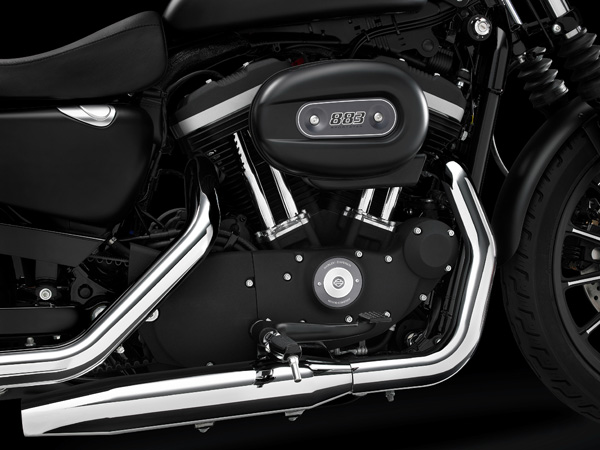The Harley-Davidson Exhaust: What it Does and What Are Your Options
 What it Does
What it Does
The exhaust involves a series of pressure waves that travel out of the main pipe. There is a positive wave and a negative wave which work together to import combustion gases from the chamber. As the positive wave goes out, the negative is moving back in toward the valves. The key to performance is making sure these waves are timed correctly with the right pipe length. If you want lower rpm performance, leave the pipe longer, while shorter lengths strengthen higher rpm performance. Choose your exhaust based on design, not looks. Pipe length and diameter, the bend radius, and other components can affect the performance of your engine. Air flow is the key, and bigger engines need more air flow, which means buying a bigger muffler. The bigger muffler may not look as good, but will be worth it in performance.
Choosing an Exhaust
There are many things to consider when buying a Harley-Davidson exhaust system. First, you must determine if you want increased performance in the low to mid range, or higher range rpm’s. This determination will play a big role in which Harley-Davidson exhaust system you choose. Decide which exhaust system meets your needs for the lowest price. Most exhaust systems come with a warranty, which is important in case of any problems. Sound is also a factor for many people. Although sound does not effect power, you have to consider if you want a milder sound or louder, throaty sound.
Types of Exhaust
There are several styles of exhaust systems to choose from, and each works in its own way. True Duals work by connecting a separate pipe to each cylinder. This separation gives maximum air flow to each cylinder, which works to increase performance. Slip on mufflers are another common choice. Installing slip on mufflers is an easier, less expensive way to boost your bike’s performance. You don’t have to worry about changing the pipes, which can be a detailed job. Also, you keep your velocity and lower end torque with the original pipes. The two in one exhausts systems run pipes into a collector. Straight pipes provide a louder, meaner sound, and increase performance on the higher rpm range. Stepped headers have at least two sections, each one increasing in size by about 1/8 of an inch. These are also designed for engines with higher rpms.

